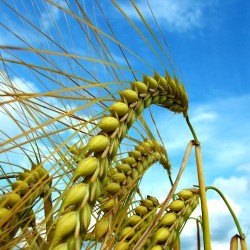Yield data released by Syngenta claims that Quilt Xcel fungicide makes plants better equipped to tolerate long periods of hot, dry weather.
Syngenta yield data indicates Quilt Xcel fungicide helped corn and soybeans in drought-stressed regions across the U.S. better tolerate the 2012 drought.
Quilt Xcel has been shown to reduce stomatal conductance, or the passing of water through the plant stomates, the natural openings in plants that allow exchange of water and gases. This improves a plant’s water use efficiency. As plants regulate water loss more efficiently, soil moisture is conserved and plants are better equipped to tolerate periods of hot, dry weather.
“I had a lot of farmers and relatives asking if they should apply fungicides this year and wondering if they should spend the money,” said Dave Keffeler, corn grower in Remsen, IA. “We ended up investing in a fungicide application and saw a 17 bushel yield increase where we applied Quadris fungicide followed by Quilt Xcel.”
A number of trials this year indicated yield boosts significantly higher than the averages Syngenta promotes for Quilt Xcel, which are 6-8 bu/A in corn when applied at the early V4-V8 timing, 14 bu/A in corn when applied around R1 and 4-8 bu/A in soybeans. The significant yield boosts often seen this year demonstrate a benefit from fungicide applications even in drought conditions. Trials in both Sioux County, IA, and Trenton, KY, this year showed corn treated with Quilt Xcel at the early timing out-yielding untreated corn by roughly 31.9 bu/A under severe drought conditions. In a soybean trial under drought conditions in Findlay, OH, Quilt Xcel-treated soybeans out-yielded untreated soybeans by 11.6 bu/A.
In a 2011 irrigation study conducted at Kansas State University, fully irrigated untreated corn produced the same yield (214 bu/A) as corn that only received 60% irrigation but was treated with Quilt Xcel at the early V4-V8 timing and again at R1.
Similarly, in a 2010 study at the University of Nebraska, corn treated with Quilt Xcel increased yields by 8 and 15 bu/A over untreated checks in plots that were fully irrigated and plots that were 60% irrigated, respectively. In addition, the 60% irrigated plot saved the grower the expense of 4.8 inches of water per acre as well as costs associated with pumping the water.
“We know Quilt Xcel improves a plant’s water use efficiency and have been taking a close look in recent years at the benefit that translates to for a grower,” said Eric Tedford, Syngenta technical product lead. “No one is saying you can grow corn in the desert because plants still need water to survive and thrive. However, results from numerous trials conducted in 2012 in drought-stricken areas confirmed what we have already learned from irrigation studies; that plants can benefit from Quilt Xcel under dry conditions.”
Aside from water use efficiency, Quilt Xcel offers other yield-boosting benefits. With Quilt Xcel, plants stay green longer, allowing for more plant growth; corn ears and soybean pods grow bigger and experience extended grain fill; and stronger stalks result in less lodging for a more efficient harvest and less potential for volunteer corn the following season.
Quilt Xcel is a component of the Syngenta water optimization portfolio, along with Agrisure Artesian drought-tolerant trait technology.
Source: Syngenta News Release
Shop Ag Spray Parts with Agrimart. TeeJet, Hypro, Greenleaf Spray nozzles

